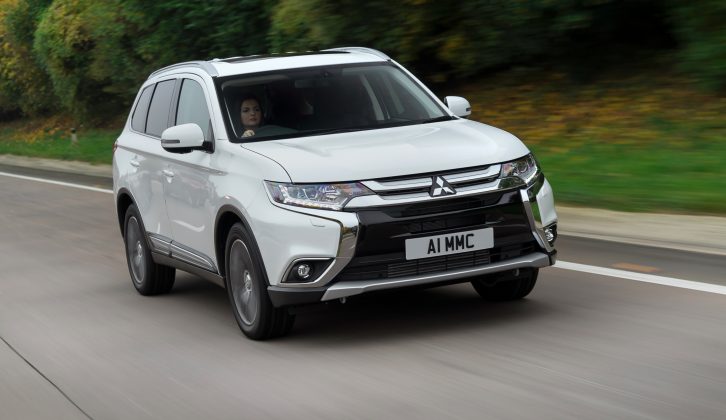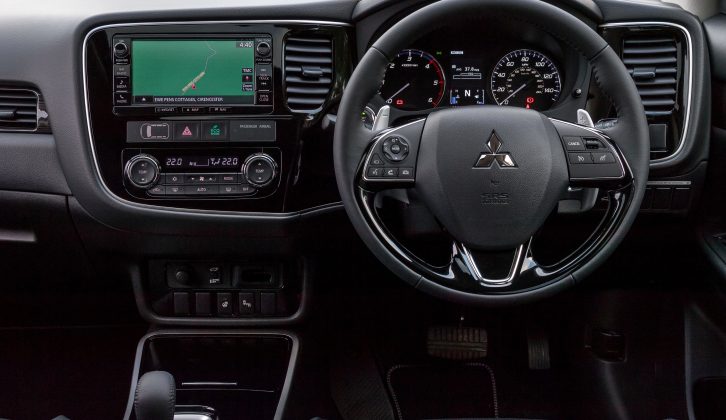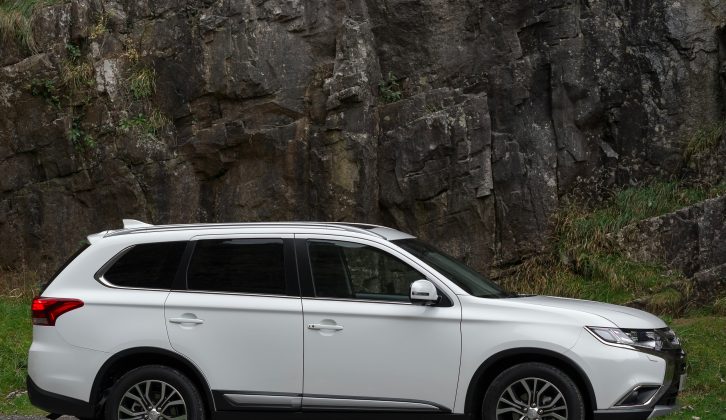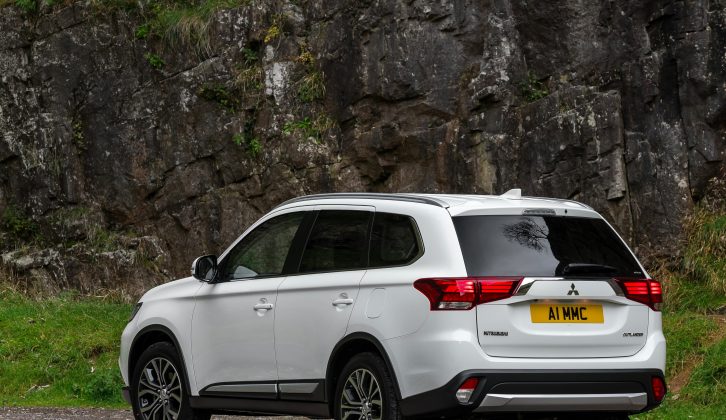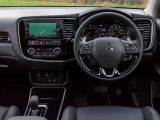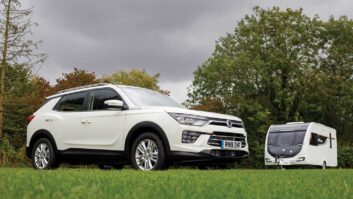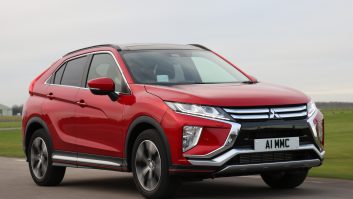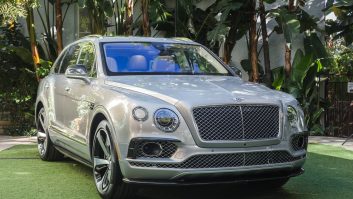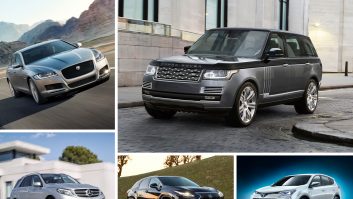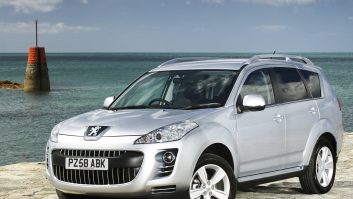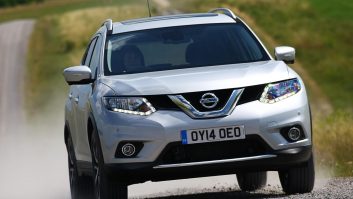Whatever you think of electric vehicles and plug-in hybrids in particular, there’s no doubt that the Outlander PHEV has been a huge success for Mitsubishi.
Since it first went on sale in 2014, Mitsubishi has sold more than 26,000 petrol-electric Outlanders in the UK. In fact, one-in-three plug-in hybrids sold is a Mitsubishi Outlander PHEV.
The diesel model has been in the shadow of the hybrid. But while the PHEV steals the headlines and breaks sales records, you can argue a strong case for the diesel for regular towing. Both the PHEV and the diesel have been updated for 2017.
What’s changed?
Let’s start with the PHEV. The all-electric range has been increased from 32 to 33 miles, although it would take ideal conditions and a featherweight right foot to get near that.
Our test drive suggests 20-25 miles is more realistic, even when driving gently. Carbon dioxide emissions have dropped by a solitary gram to 41g/km. Mitsubishi quotes an average economy figure of 166mpg.
In reality, you could do a lot worse or much better than that figure. It really depends on how you drive the PHEV, and your average daily mileage.
Drop the kids off at school, head to work just a few miles from home and recharge every evening, and you could conceivably go several weeks without going anywhere near a filling station. Only when you need to drive further than the car’s all-electric range will you have to call upon the petrol engine and eventually top up with fuel.
It’s this kind of use, with a low daily mileage and occasional longer journeys, which plays to the Outlander PHEV’s strengths. Tweaks to the hybrid system mean it’s now more likely to rely on electric power alone, so it’s possible to accelerate at a reasonable pace without waking up the petrol engine.
And there’s now an EV Priority Mode, which will run the car as a pure electric vehicle, so long as there’s enough charge in the batteries.
Other changes include an electronic parking brake, which should make for fuss-free hill starts while towing. There’s also an auto-hold function to prevent the car rolling backwards if the driver takes their foot off the brake pedal.
Behind the wheel
Driving the Mitsubishi Outlander PHEV remains an intriguing if slightly aloof experience. There’s satisfaction to be had from eking out the maximum possible all electric range.
You can do this by using paddles behind the wheel to increase regenerative braking and recapture as much energy as possible while coasting downhill. And there’s something very appealing about the lack of noise from under the bonnet when driven as a pure EV.
Otherwise the Outlander is a competent but unexciting car to drive. The suspension has been tweaked to improve the ride, and it now feels better tied down over undulating roads. But it still crashes and thumps over sharp bumps, and there’s considerable road noise over coarse surfaces.
The same is true of the diesel, only you don’t have the benefit of near-silent running on short journeys. Tweaks to the 2.2 DI-D for 2017 include a shark fin antenna, a 12V socket in the boot, and rain and dusk sensors, among other minor detail changes.
What tow car ability does the Outlander have?
But there’s still a gulf between the PHEV’s 166mpg economy figure and the diesel manual’s 53.3mpg. However, the diesel has many important advantages over the PHEV, especially for regular caravanners.
Having towed with a PHEV on a number of occasions, it performs well enough, even when the battery drops low. But the more petrol power is relied upon, the more noise there is under acceleration, and fuel economy plummets.
We once tested the PHEV’s towing economy around a 26-mile circuit of A-roads and motorways, pulling a caravan weighing 1500kg. The PHEV achieved a remarkable 40.6mpg when starting with a charged battery. Repeating the loop with the battery at a low level saw that drop to 24.7mpg.
Even in solo driving, Mitsubishi estimates that the tipping point comes when a journey reaches 106 miles. After that, the diesel is more economical overall, unless the driver is able to recharge the PHEV.
Number crunching
The plug-in car is much heavier than the diesel, to the benefit of outfit matching ratios.
The PHEV has a kerbweight of 1935kg, including 75kg for the driver not included in the Mitsubishi’s published kerbweight. The diesel’s kerbweight ranges from 1640kg to 1685kg (including 75kg for the driver), depending on the specification and whether the car is an auto or a manual. So, matching ratios will be more favourable if you opt for the plug-in model.
However, that’s offset to a large extent by the PHEV’s lower legal towing limit. It may weigh almost two tonnes, but to stay legal you’ll need to tow no more than 1500kg. The diesel can legally pull 2000kg.
We wouldn’t advise towing a caravan of that weight as it exceeds the 100% matching guideline commonly recommended as a prudent limit for experienced tow car drivers. But for a seasoned caravanner looking to tow a caravan weighing, say, 1600kg, the diesel can legally do the job, the PHEV can’t.
The noseweight limit could also be an issue, as while the diesel’s maximum download is 100kg the PHEV’s is 75kg.
With the diesel, there’s no drop-off in performance when the battery runs low. Cars with a manual gearbox have 280lb ft, autos have 265lb ft. At best, the PHEV delivers up to 244lb ft.
How many seats do you need?
The diesel is also the more practical car. There’s room for seven (although the third row is very cramped), whereas every PHEV is a five-seater. Even if you’re not fussed about the third row, boot space drops from 591 litres to 463 litres if you pick the hybrid.
You’ll pay more for the PHEV, too. It used to be that a £5000 government grant made the cost of the PHEV comparable with the diesel. Now that subsidy has fallen to £2500. So an Outlander diesel auto in mid-range ‘3’ spec costs £29,549. The equivalent PHEV costs £31,749. That difference is enough to buy more than 400 gallons of diesel.
If that sounds harsh on the PHEV, it isn’t meant to be. Despite the changes to the government grant scheme it still makes a lot of sense for the right kind of driver.
Anyone running a PHEV as a company car will be taxed on just 11% of the list price (rising to 13% in the next tax year), compared with 30% (rising to 32%) for the diesel auto. That more than makes up for the price difference.
Private buyers will benefit, too, provided they spend enough of their motoring miles running on cheap electrical power.
It’s understandable that the PHEV gets most of the attention. It’s a remarkable piece of technology, and very tax efficient. But for regular caravanning, I’d choose the diesel.
While the PHEV steals the headlines, you can argue a strong case for the diesel for regular towing
